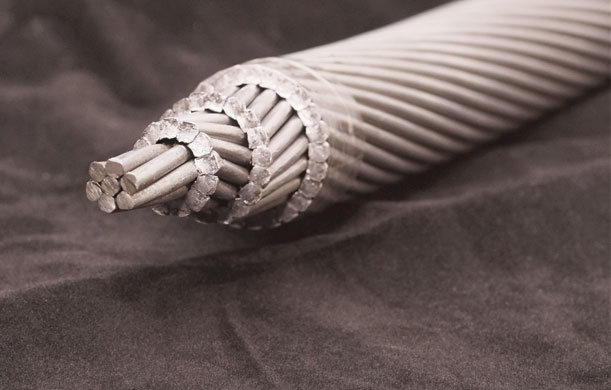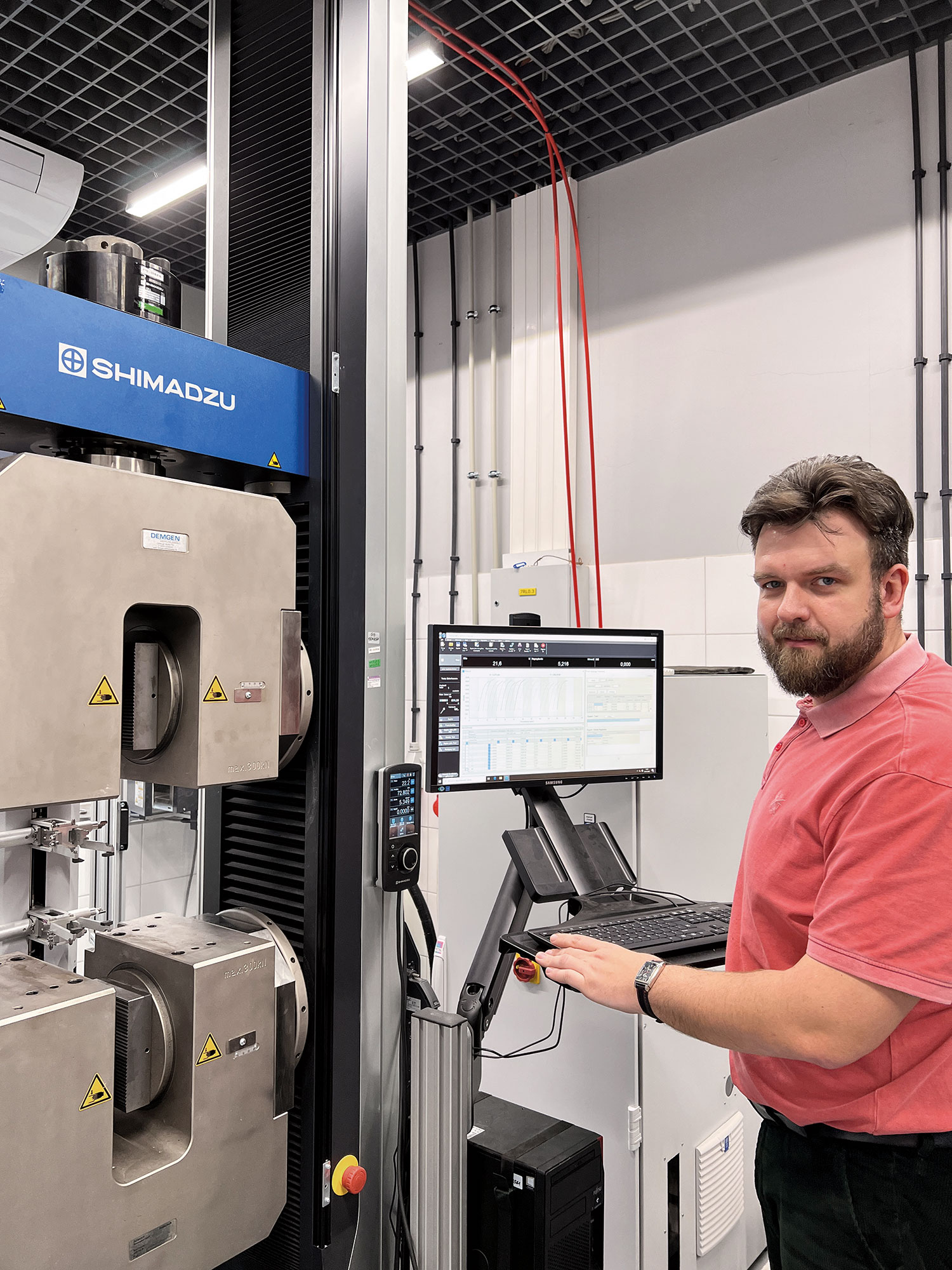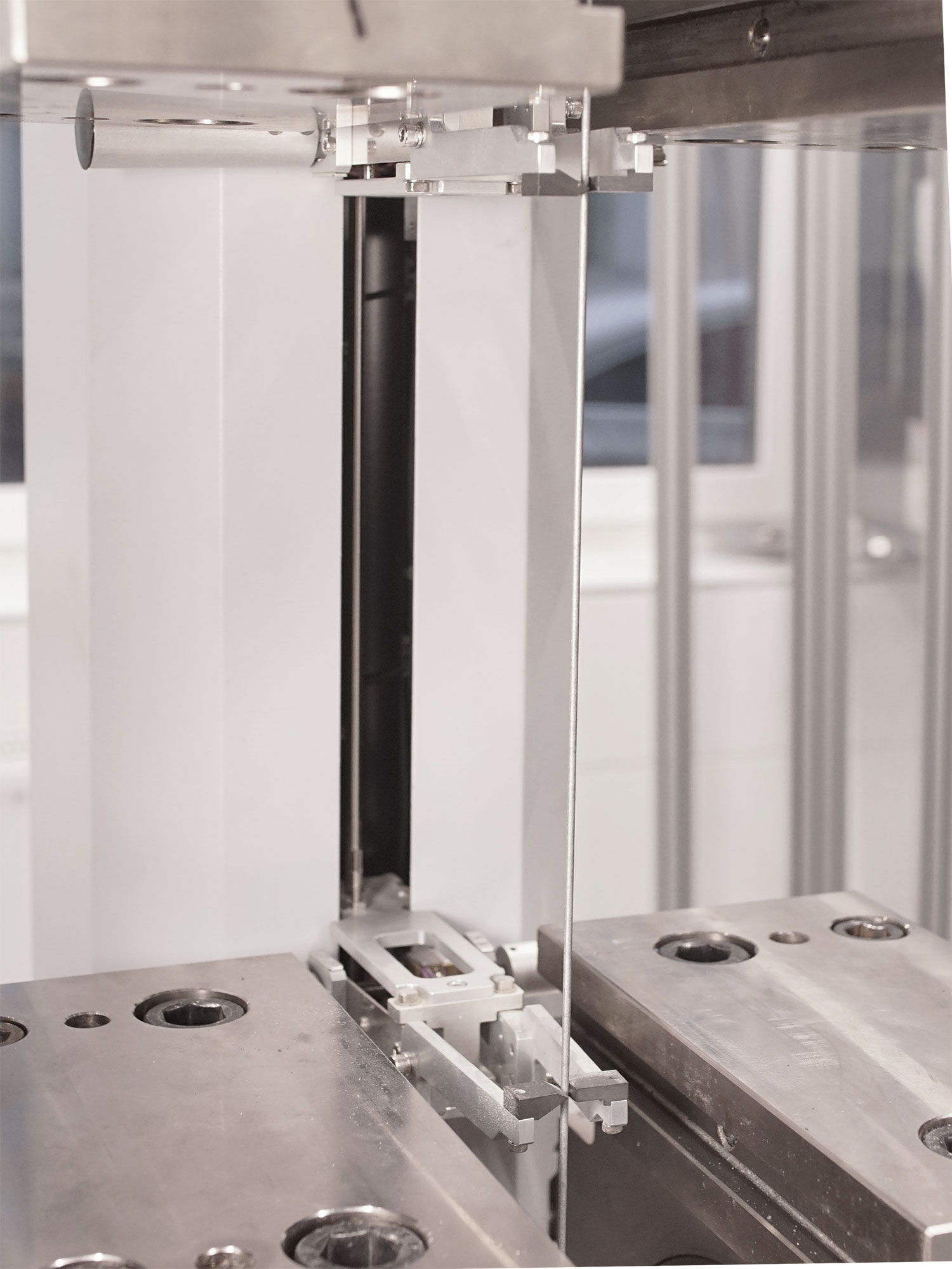Keeping
the lights on
Shimadzu automates precision testing of ACSR power conductors
Mgr inż. Piotr Szade, Central Mining Institute
An electric power grid is a socially and economically critical installation and its components must meet exacting performance and safety criteria. The Central Mining Institute (GIG) in Poland tests and verifies the mechanical properties of overhead conductor wires for compliance to current standards. Using Shimadzu equipment, GIG is able to minimize human error in testing via an automated process. The result is a reliable, simplified method.
Transmitting Power
Energy is crucial to maintaining life as we know it. Intimately linked to this is the transmission of energy over long distances, from its production sites to its distribution hubs. High-voltage AC (HVAC) transmission lines have been performing this task for more than a century. For the transmission of current at voltages in excess of 100 kV, bare overhead conductors are employed. Aluminium is used as the conducting material – chosen over copper due to its much lower weight and cost.
Two very different materials
To ensure adequate resistance to bending, the conductors are manufactured in the form of a spiral rope containing wires with diameters ranging from about 1.2 to 5 mm. There are many types of overhead wires, but the most common one is Aluminium Conductor Steel Reinforced (ACSR), in which the conductive aluminium layers wrap around a high-strength steel core made of a single wire or strand. The cross-sectional ratio of aluminium to steel varies and can range from 1.25 to as much as 20 as standard.
The ACSR cable is therefore an arrangement of conductive, drawn aluminium and steel wires combined to improve its mechanical capabilities. This is extremely important as the cable has to cope with a number of mechanical factors during operation: constant ones such as tension and its own weight as well as variable ones such as icing, temperature effects and wind pressure along with the resulting vibrations.
These materials must work well together, despite having significantly different mechanical parameters: aluminium wire has a nominal strength of 160 to 325 MPa (depending on the class), while steel wires can reach over 1,800 MPa. Add to this the difference in their elastic modulus and elongation at rupture and the prediction of the mechanical characteristics of a complete conductor becomes rather complicated. The maximum stress exerted on the steel wires in a twisted conductor corresponds to the elongation at which the aluminium wires break. In practice and in normative documents, this elongation is assumed to be 1 % and it is these values that are used to calculate the nominal RTS (Rated Tensile Strength) breaking strength of ACSR cables.
Conductor testing
Because conductors are such a critical component of power grids, a number of standardized requirements are imposed on them. Within the EU, the leading standard relating to round wire conductors is EN 50182. It specifies the requirements that must be met by any conductor in service and how testing should be carried out. It also includes specific types of tests for the wires that make up the conductor, including a standard tensile test and other tests of mechanical properties. As these results form the basis for calculating the strength of the entire cable, their precise verification is crucial in determining its quality and thus its safe use.
The determination of stress at a 1 % elongation of the steel wire consists of several steps (described in detail in EN 50189). The first is to mount the wire in a testing machine and subject it to a pre-tension test. Next, an extensometer is mounted on the specimen and a certain specified initial elongation of the specimen is performed. The final stage is to tension the specimen until the extensometer indicates a total elongation corresponding to 1 % of the gauge base and read the force reading from the testing machine. This procedure is complex and includes potential sources of measurement error. In addition, it applies to straight wires (central core wires or those prior to twisting) that do not have shape waviness.
Automated simplicity
This test is regularly performed at Power Grid Systems – an accredited laboratory of the Central Mining Institute (GIG) in Katowice, Poland. The sample is mounted in a Shimadzu AGX-V 300 kN machine equipped with DEMGEN hydraulic grips with automatic pressure adjustment. The subsequent test steps are carried out automatically according to the method entered into the Shimadzu Trapezium software and the specimen geometry measured. The wire is pulled to a force corresponding to the preload and the Shimadzu SIE-560A extensometer, set to a 250 mm gauge base, is automatically clamped onto the sample.
The specimen is subjected to further uniform stretching until a total elongation value of 1 % is reached. The force and elongation data corresponding to this point – precisely determined by the automated system – are converted by the software into a finished result for the stress at 1% elongation of the steel wire tested. This serves as the basis for determining compliance with the normative requirements in this field. Testing carried out in this way avoids error resulting from manual installation and readout of the extensometer and its large measurement base results in excellent measurement precision.
As the power needs of the world grow, so too will the physical infrastructure required – including transmission networks. It is therefore vital that efficient and reliable verification of the safety and performance properties of power conductors be as simple to perform as turning on a light. Top-of-the-line measuring equipment and software help make that happen.
The Główny Instytut Górnictwa (GIG) – internationally known as the Central Mining Institute – is headquartered in Katowice, Poland. Experts and research teams at GIG provide a wide variety of multidisciplinary services supporting industry, regional and local authorities as well as government institutions in fields ranging from environmental engineering, geoengineering, clean coal technologies and mining to training and education, occupational safety and testing and certification.


